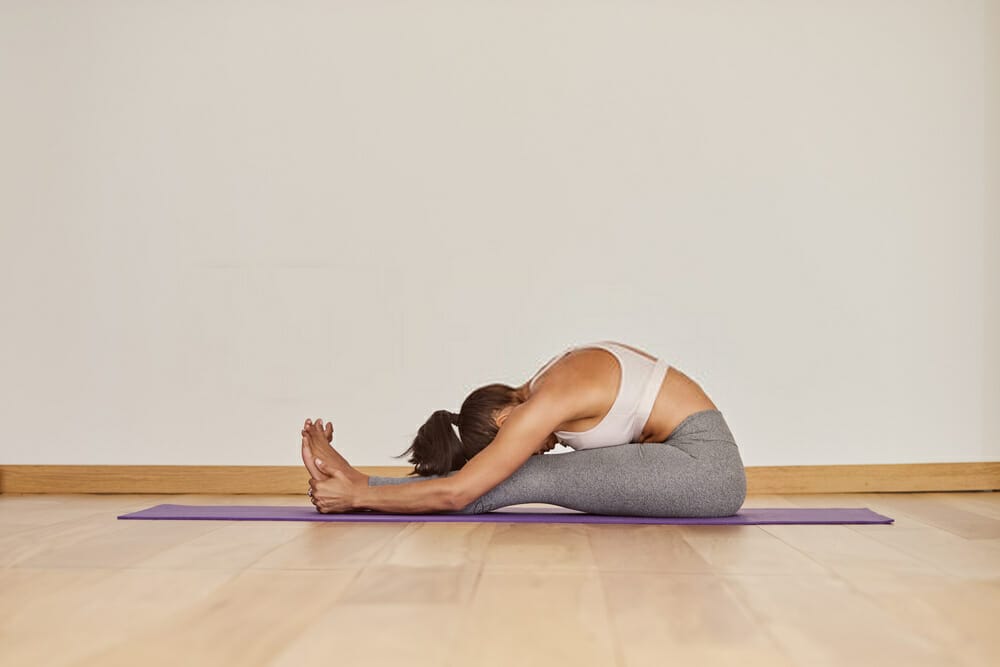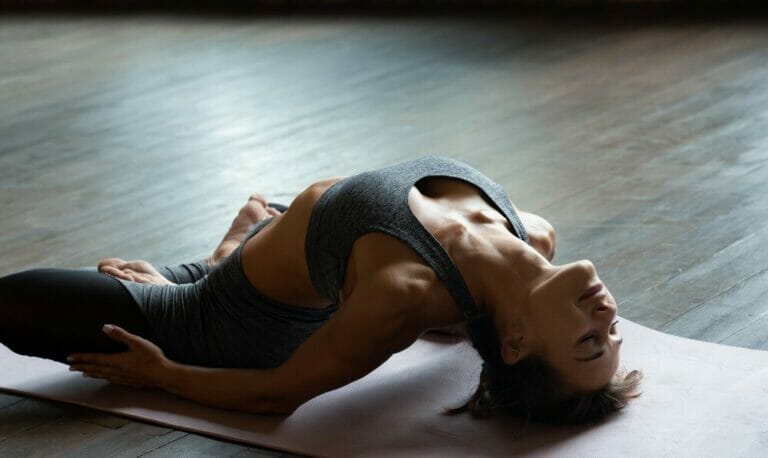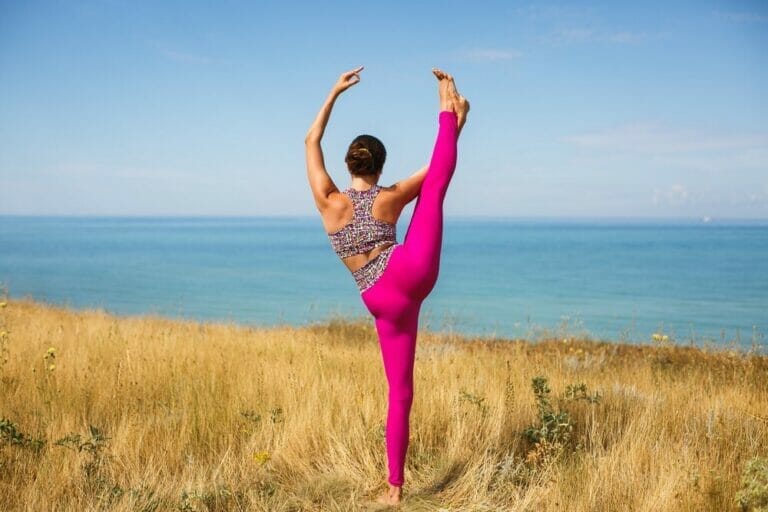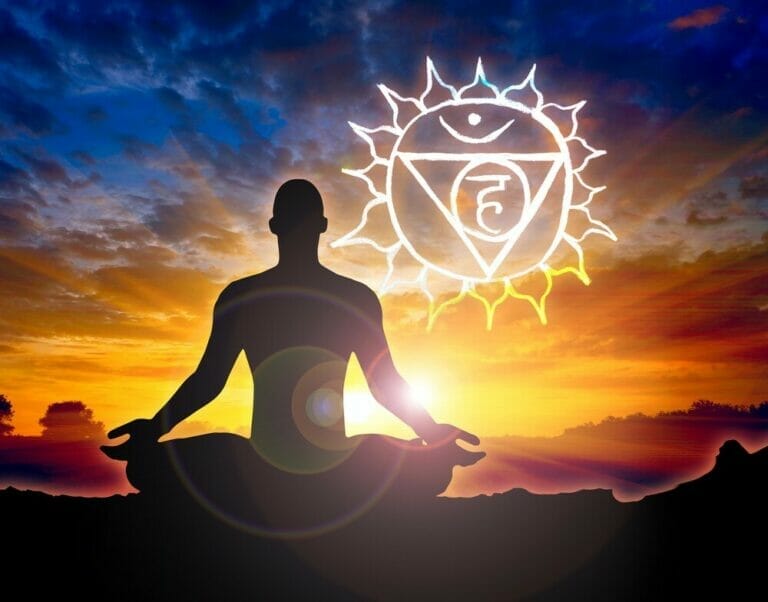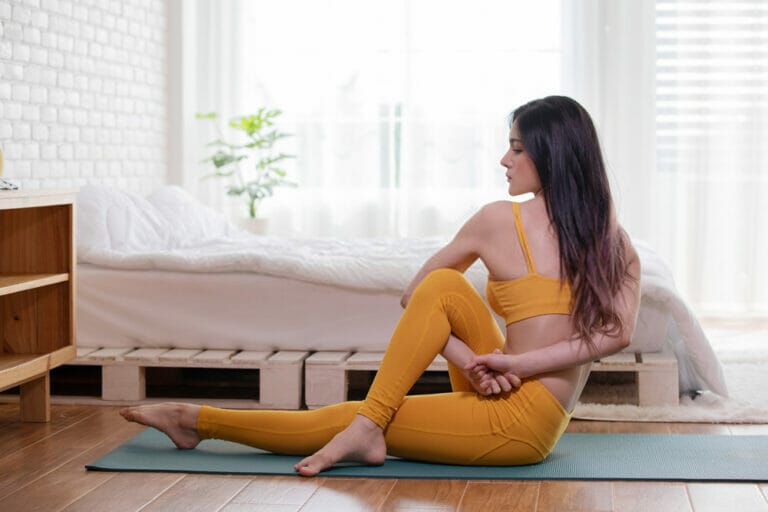Caterpillar Pose
If you’ve ever heard of yoga, you know that it incorporates mindful breathing and mindful thoughts. This practice can be both relaxing and challenging, depending on the pose.
One of the most basic poses is called the caterpillar pose. It is a great introductory pose for beginners or anyone who wants to start slowly with their splits yoga routine.
So, let’s discuss the benefits and risks of this pose and explore why a caterpillar pose is beneficial for beginners.
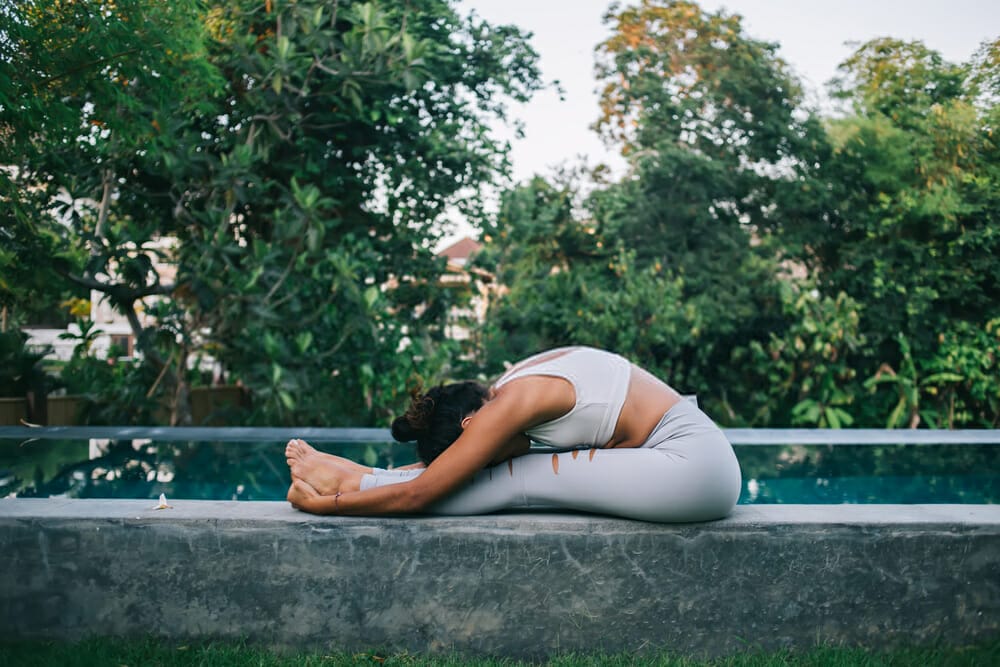
The Caterpillar pose is also called the Paschimottanasana in Sanskrit and Marjariasana in Hindi. It is often used as a warm-up for the splits and has many benefits. This pose is so named because it resembles a caterpillar getting ready to transform into a butterfly.
The main goal of this pose is to realign your spine and slowly release tight muscles that have formed from extended periods of sitting at a desk, etc.
Let’s first look at the risks and precautions of this pose.
Risks and precautions:
While this is a restorative pose, it can still bring up certain risks to the body. For example, if you are pregnant, very overweight or have any back disorders, you should discuss the pose with your doctor or yoga teacher before attempting it.
The posture can also be rigid on the shoulders and possibly cause injury if not done correctly. For these reasons, it is imperative to seek out a qualified yoga teacher to help you learn this pose safely.
Benefits of the caterpillar pose:
In addition to decreasing tension in the lower back and stretching the knees, this pose is also an excellent warm-up for long-standing poses such as the tree, cross-legged and down dog.
The knee stretching occurs when splits can become difficult after prolonged sitting or standing. This pose will help lengthen the body by stretching and elongating the spine.
It can also help to loosen the calves and open up the hips and groin area, which can ease tension in that area.
The main benefits are:
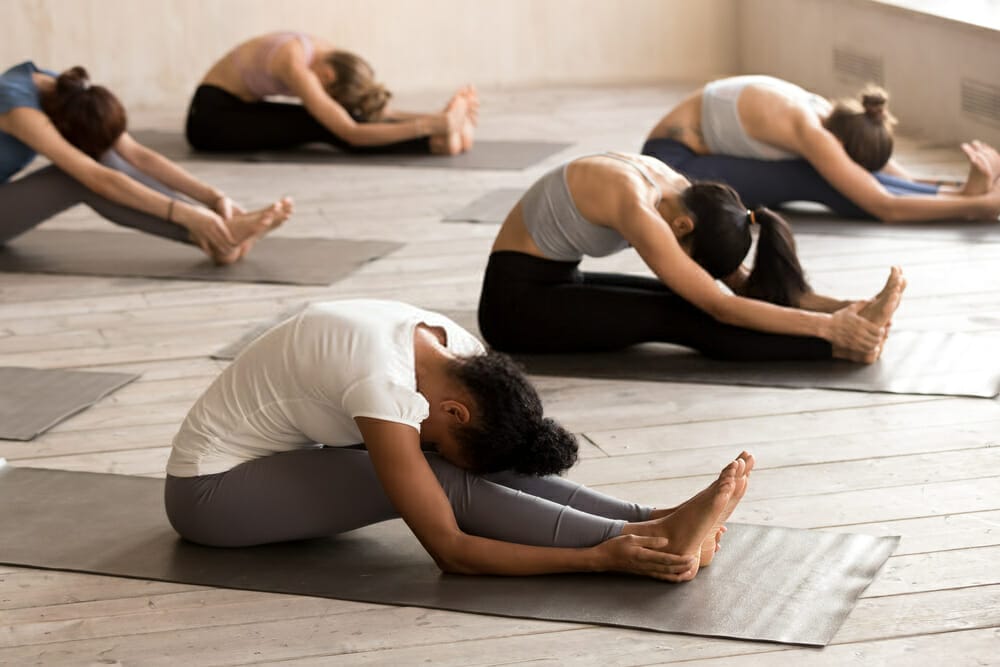
Stretches the back and hamstrings
Many people avoid this pose because they think it will be painful, but it helps relieve tension in the lower body.
Lengthens the spine
By stretching the spine, it helps to open out your chest and lengthen your inner body. It will also reduce pressure on your joints and muscles and help you stand taller.
Opens up hips and groin
This will help create greater flexibility and tone up the abdominal muscles that support you from below.
The kidneys and adrenal glands get stimulated
This pose is excellent for the kidneys, adrenal glands and internal organs. It will help flush out toxins from the body and ease tension in the lower back.
Massages the digestive organs with inhalation and compression
Deep breathing will also help relax the abdominal muscles, keeping organs healthy and relaxed.
Stimulates the meridians of the urinary bladder along the spine
These are the channels that link to your kidneys and all the organs of your lower body. By stimulating these channels, you will notice a more significant energy flow in your body.
There are endless poses to learn, but a caterpillar pose is a great starting point for anyone new to yoga or even any beginner.
Most beginners will not have a lot of strength in their bodies, so it is important to begin slowly with this pose. However, when performed correctly, this pose should not hurt at all.
What muscles get targeted in this pose?
All engaged during the caterpillar pose, the gluteus maximus, deltoid, and serratus anterior muscles. In addition, the biceps femoris, semitendinosus and semimembranosus of the leg are also engaged.
Level of Difficulty – Intermediate
This pose is effortless to learn if you have the right teacher when it comes to difficulty. However, beginners should not attempt this independently, as it can be tough on the joints and muscles.
So when working with a qualified instructor who knows what they are doing and can explain any stretches or techniques correctly, you will be able to do more advanced poses without too much difficulty.
Now, let’s learn how to get into the caterpillar pose from its base position, which is the seated position. There are many ways to get into this pose, but we will focus on the most straightforward way to use it as a beginner.
How to perform:
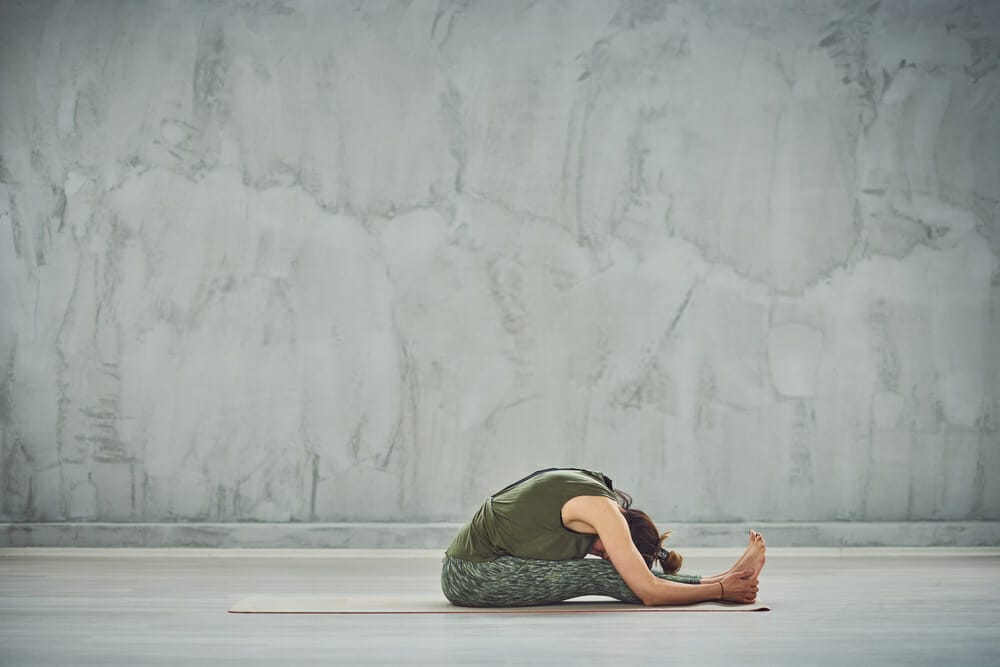
Step 1: Fold forward from the hips, allowing your spine to round from a seated position with your legs outstretched in front of you.
Step 2: Allow your feet to fall outwards or inwards as you relax your legs naturally.
Step 3: Maintain the posture for 3 to 5 minutes. Again, you want to feel sensations down your spine and in your hamstrings.
Step 4: To exit the pose, place your hands against the floor and slowly unroll your spine.
Step 5: Before moving into your counter stance, place your hands behind you and lean backwards to relax your hips.
You may hold this pose for 3-5 minutes.
Variations of the pose
You can perform a variation of this pose by using props as support.
Rolled blankets
If you have knee sensitivity or unusually tight hamstrings, you can support your body by bringing a rolled blanket or small bolster under your knees. It will allow the knees to bend slightly so that the muscles don’t overstress as you fold forward.
Folded blanket under the hips
If this pose hurts or hurts your low back, sitting on the very edge of a blanket will help to appropriately tilt the pelvis so that you may find a bit more forward motion. Then, you can raise yourself as high as you need to.
Tips for beginners
If you are already seated, you can follow these steps to fold forward and into the pose.
- If the feelings in your hamstrings/lower back are too severe, bend your knees as much as you need to.
- If your low back is feeling it, try sitting on the very edge of a folded blanket and using a bolster to support your hips.
- If you are in pain from placing too much weight on your hamstrings, bend your knees slightly as you fold forward. It will help you get into the pose without putting too much weight onto your hamstrings.
What poses can you do before and after the Caterpillar pose?
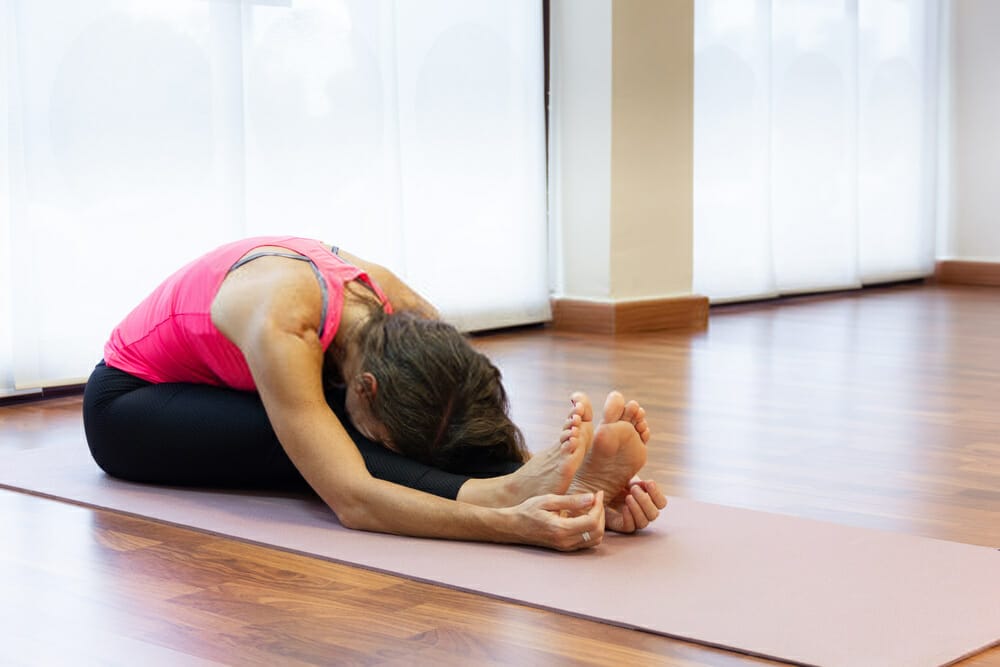
Many poses can be performed before and after the caterpillar pose. These include:
- Bridge – This will help to warm up your hips and hamstrings. It is also beneficial for releasing tension in your lower back.
- Cat/Cow Stretch – Another great exercise to help warm up the spine and improve flexibility in the lower back.
- Downward Facing Dog – A pose that stretches the entire body while warming up the muscles as well.
After this pose, you may move on to the Swan pose.
Who should not do this pose?
If you have a health issue in your lower back, avoid this pose. It can strain the lower back even more if you rely on a larger surface area.
- Anyone who is pregnant or has any preexisting injuries should avoid this pose.
- Anyone with leg pain may also want to avoid this pose, especially if they are experiencing any tenderness in the knees.
Alternative poses
You can try the simple seated forward bend instead of the caterpillar pose. It will help stretch your spine and hamstrings simultaneously without stretching the knees so much.
You may also try-
- Half Butterfly: bend one leg and place the foot against the opposite inner thigh.
- Half shoelace: bend one leg and cross the opposite leg’s knee, heel towards the hip.
- Half Frog: bend one leg, rotate your thigh inward, place your foot beside your hip.
Conclusion:
The caterpillar pose is used a lot in classical ballet and modern dance. The pose is an excellent stretching exercise for the hamstrings and helps dancers develop flexibility and strength. In ballet class, it creates split leg positions such as en pointe (ballet) and arabesque (ballet).
In addition, the caterpillar pose is used in yoga to create balance and flexibility. It hopes to strengthen the muscles around the hips, knees, and feet and stretch the legs, spine, and chest. The caterpillar pose also helps with balancing poses such as Plank Pose.

